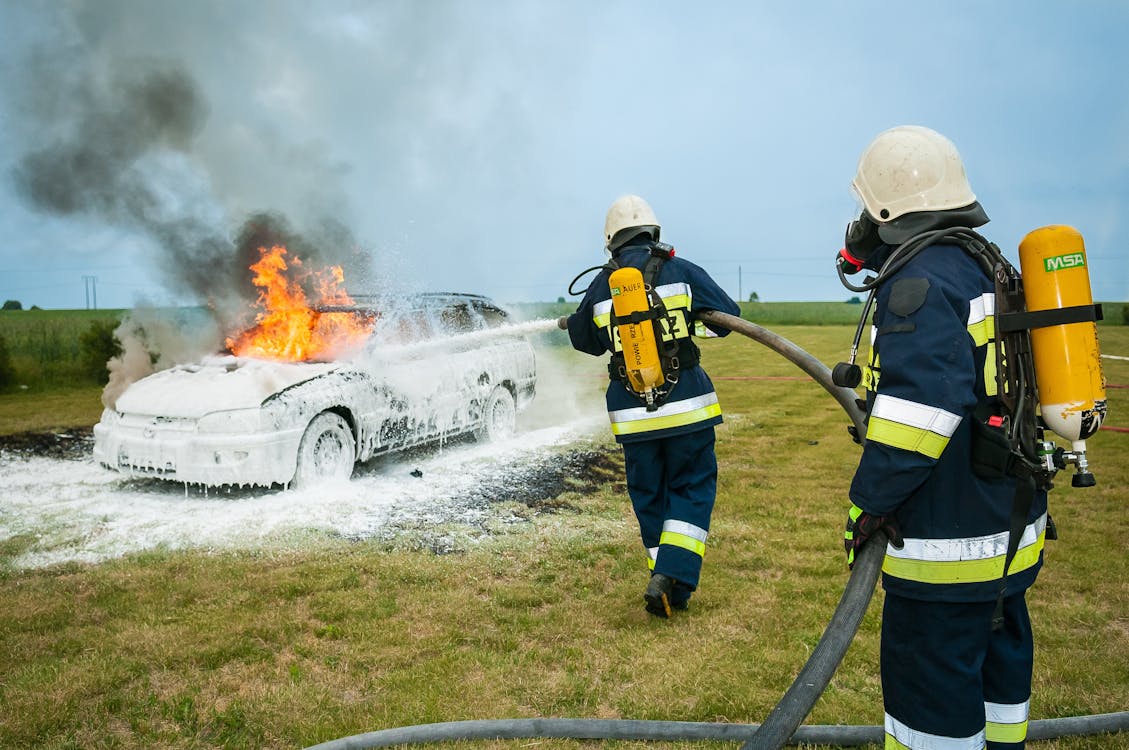Foam Or Fiasco? Navigating The Aqueous Film-Forming Foam Crisis
The widespread use of aqueous film-forming foam (AFFF) in firefighting has long been regarded as an indispensable tool in controlling and extinguishing fires. However, recent revelations have shed light on a darker side of this seemingly indispensable solution.
Author:Michael RachalReviewer:Finn WildeJun 14, 202433.2K Shares481.9K Views

The widespread use of aqueous film-forming foam (AFFF) in firefighting has long been regarded as an indispensable tool in controlling and extinguishing fires. However, recent revelations have shed light on a darker side of this seemingly indispensable solution.
AFFF contains per- and polyfluoroalkyl substances (PFAS), chemicals notorious for their persistence in the environment and potential health hazards. The result? A multifaceted crisis with far-reaching implications, prompting urgent calls for action and a reevaluation of firefighting practices.
In this article, we’ll discuss the AFFF crisis, navigating through its complexities to shed light on its origins, impacts, and possible solutions.
Origins And Escalation Of The AFFF Crisis
Technology Networksnotes that the AFFF crisis originated from the need for more effective firefighting agents in the mid-20th century. Developed initially for military use, AFFF quickly gained popularity in civilian firefighting due to its remarkable ability to suppress fires involving flammable liquids.
However, the formulation of AFFF with PFAS, including compounds like perfluorooctane sulfonate (PFOS) and perfluorooctanoic acid (PFOA), has since led to widespread contamination. This affects water sources and ecosystems.
As industries and firefighting agencies increasingly grapple with the consequences of PFAS pollution, the urgency of addressing the AFFF crisis becomes ever more apparent.
Assessing The Ecological Impact
The ecological impact of AFFF contamination extends beyond immediate water sources to encompass soil, vegetation, and wildlife habitats. PFAS compounds, known for their persistence and bioaccumulative properties, pose significant risks to aquatic organisms, terrestrial wildlife, and plants.
NIHnotes that this contamination disrupts food chains and ecosystems, threatening biodiversity and ecosystem stability. The pervasive nature of AFFF pollution highlights the need for comprehensive remediation efforts and proactive measures to prevent further environmental degradation.
Human Health Hazards
Exposure to PFAS through contaminated water, food, and air raises serious concerns about human health. These chemicals have been linked to various adverse health effects, including developmental disorders, hormonal disruptions, and immune system suppression.
Communities located near firefighting training facilities, airports, and industrial sites face heightened risks of PFAS exposure. This has amplified calls for stricter regulations and comprehensive health monitoring. The long-term implications of PFAS exposure underscore the imperative of addressing the AFFF crisis with urgency and diligence.
Regulatory Complexities And Accountability
Navigating the regulatory landscape surrounding AFFF and PFAS compounds is fraught with challenges. Varying standards of oversight, jurisdictional complexities, and industry lobbying efforts contribute to regulatory inertia and gaps in accountability.
Despite mounting evidence of the harms posed by PFAS contamination, comprehensive regulations, and enforceable standards remain elusive. The need for transparent, science-based approaches to regulation and oversight is crucial in addressing the AFFF crisis and safeguarding public health and the environment.
The legal landscape has also seen significant developments, particularly with the high-profile lawsuits involving AFFF manufacturers. Several states, municipalities, and private entities have filed lawsuits against major chemical companies, such as 3M and DuPont. These lawsuits allege these manufacturers knowingly produced and distributed AFFF despite being aware of its environmental and health hazards.
The AFFF lawsuitseeks compensation for the extensive costs of environmental cleanup, health monitoring, and water treatment necessitated by PFAS contamination. The outcomes of these lawsuits could set important precedents for corporate accountability and influence future regulatory actions on PFAS chemicals.
Moreover, TorHoerman Law notes that these lawsuits highlight the broader issue of corporate responsibility and transparency. Plaintiffs argue that chemical companies failed to disclose critical information about the risks associated with PFAS, thereby endangering public health and the environment.
The ongoing litigation underscores the urgency of holding corporations accountable for environmental pollution and ensuring that regulations are established to prevent future crises.
Toward Sustainable Fire Suppression Practices
Transitioning to sustainable fire suppression practices requires a concerted effort from stakeholders across sectors. Investing in research and development of PFAS-free alternatives, such as fluorine-free foams and innovative firefighting technologies, is essential. This will help mitigate the environmental and health risks associated with AFFF.
International Fire & Safety Journal notes that it is likely that fluorine-free foams will undergo development and eventually match the effectiveness of AFFF. They are expected to achieve the same proportioning percentages and application rates but without the harmful environmental and health effects.
Collaborative partnerships between government agencies, industry stakeholders, and affected communities are crucial for implementing effective regulations, monitoring PFAS pollution, and facilitating remediation efforts. By prioritizing innovation, collaboration, and proactive measures, we can chart a path forward toward a safer, more sustainable approach to fire suppression.
FAQs
What Is The Difference Between AFFF And FFF?
Aqueous film-forming foam (AFFF) contains per- and polyfluoroalkyl substances (PFAS), known for their fire-suppressing properties and environmental persistence. Fluorine-free foam (FFF) is an alternative that does not contain PFAS, aiming to reduce environmental and health impacts.
What Are The Environmental Effects Of AFFF?
AFFF contamination leads to long-lasting pollution of water bodies, soil, and ecosystems due to its PFAS content. These "forever chemicals" persist in the environment, accumulating in wildlife and disrupting the ecological balance.
How Does AFFF Affect The Body?
Exposure to AFFF's PFAS compounds can lead to serious health issues, including cancer, immune system suppression, and developmental problems. These chemicals accumulate in the body over time, posing long-term health risks.
In conclusion, the AFFF crisis reveals the urgent need for a holistic approach to address its multifaceted impacts on ecosystems and human health. Transitioning to PFAS-free alternatives and fostering transparent regulatory frameworks are crucial steps toward mitigating this crisis.
Collaboration among stakeholders is paramount in implementing effective regulations, monitoring pollution, and facilitating remediation efforts. By prioritizing sustainability, innovation, and collective action, we can navigate through this crisis and pave the way for safer, more environmentally conscious fire suppression.

Michael Rachal
Author
Michael Rachal believes that luxury lies in the details. With over 20 years of experience in the luxury travel industry, he has crafted hundreds of bespoke itineraries for clients seeking personalized, unforgettable experiences.
Whether guiding clients through private cultural tours or curating culinary journeys with world-renowned chefs, Michael ensures that each trip is tailored to perfection.
His ability to anticipate needs and exceed expectations has earned him a reputation as a leading expert in luxury travel.

Finn Wilde
Reviewer
For Finn Wilde, the wilderness is more than just a destination - it’s a way of life. Over the past decade, he has led multiple expeditions in some of the world’s most remote regions, from the icy fjords of Greenland to the rugged trails of Patagonia.
Finn emphasizes sustainability in all of his adventures, helping participants connect with nature while promoting responsible exploration. His expeditions inspire individuals to explore the great outdoors while fostering a deep respect for the environment.
Latest Articles
Popular Articles